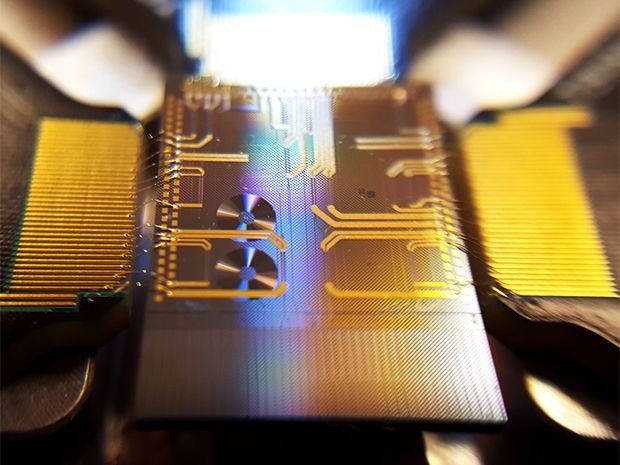
Photo: INRS University
Bitcoin, Litecoin, even Steem, all run on a blockchain that remains secure because of cryptography based on factoring large intergers. Classical computers, like the one I'm typing this on represent this data as a series of ones and zeroes created by switching transistors either on or off. Breaking the blockchain code with this computer is a near impossible task. Quantum computers, now in their infancy, will take advantage of the quantum physics property of superposition whereby quantum bits, or qubits, can be both one and zero at the same time, allowing a quantum computer to perform two calculations at once. If that's not fast enough, two qubits linked together would allow for four calculations at once, three qubits eight calculations, and so on exponentially. That's the theory but, in reality, working with multiple qubits has proven more difficult.
Current research on quantum computing has focused on using particles to serve as qubits. In theory, it should be possible to combine qubits into qudits that can assume more than two states simultaneously. If I understand that correctly, instead of zero and one, a four-state qudit could be 0,0 – 0,1 – 1,0 – and 1,1 all at the same time. So, a quantum computer with two 32-state qudits would replace 10 qubits, avoiding the difficulty of working with multiple qubits.
In an article in IEEE Spectrum by Charles Q. Choi on 6/28/2017 scientists announced that, for the first time, they have created a microchip that can generate two entangled qudits each with 10 states, for 100 dimensions total, more than what six entangled qubits could generate.
“We have now achieved the compact and easy generation of high-dimensional quantum states,” says study co-lead author Michael Kues, a quantum optics researcher at Canada’s National Institute of Scientific Research, or INRS, its French acronym, in Varennes, Quebec.
The article goes on to say that, using off-the-shelf telecommunications components, these researchers have developed a photonic chip that uses laser light fired into a resonator to emit entangled pairs of photons, each of which is in a superposition of 10 possible wavelengths or colors.
“For example, a high-dimensional photon can be red and yellow and green and blue, although the photons used here were in the infrared wavelength range,” Kues says. Specifically, one photon from each pair spanned wavelengths from 1534 to 1550 nanometers, while the other spanned from 1550 to 1566 nanometers.
This use of commercially available materials could be the breakthrough quantum computing has been waiting for. For more details, read Mr Choi's article, or check out the original publication in Nature.
This breakthrough emphasizes the need for quantum resistant blockchains like QRL
So good... I am downloading the nature paper.
Thanks. Really amazing stuff.
Interesting post, I will be going into how quantum computing effects cryptography but also how quantum cryptography works in my next part of my cryptology series. It is amazing how fast technology is accelerating!
Thanks. I'm looking forward to your next installment.
meep